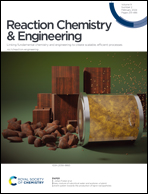Oxygen-doped Sn17Sb6S29 bimetal oxysulfide catalysts for efficient reduction of organic pollutants and hexavalent chromium in the dark
Abstract
Novel oxygen-doped Sn17Sb6S29 bimetal oxysulfide catalysts (labeled as SnSbOS) were successfully synthesized by a facile method via adjusting the H2O2 amount. The samples were characterized by XPS, XRD, UV, SEM, FTIR, and BET, and their catalytic performance was evaluated by reducing a toxic organic compound (4-NP), organic dyes (MO, MB, RhB), and heavy metal ions (Cr(VI)) without light illumination. The results showed that adding an appropriate amount of H2O2 could improve the catalytic performance. The SnSbOS-3 catalyst prepared with 0.4 ml H2O2 had the best catalytic performance, i.e., 100 ml of 20 ppm 4-NP solution was completely reduced by 5 mg SnSbOS-3 in 8 min. In addition, 5 mg SnSbOS-3 also completely reduced 100 ml solutions of 50 ppm MO, RhB, MB, and Cr(VI) within 6, 6, 8, and 6 min, respectively. The oxygen doping can adjust the band energy structure and increase the active surface sites of the SnSbOS catalyst. Hydrogen peroxide regulating the various valence states of Sn in the catalyst can promote electron transfer and improve the activity of the catalyst. Therefore, SnSbOS is an effective catalyst for reducing toxic organics, organic dyes, and heavy metal ions and has great potential for industrial applications.



 Please wait while we load your content...
Please wait while we load your content...